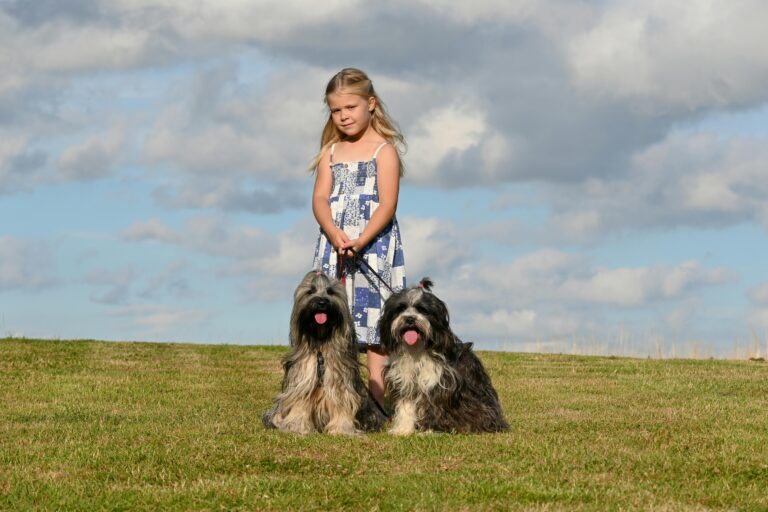Raising kids and dogs together can be incredibly rewarding, but it also comes with its fair share of challenges. From a dog jumping on your toddler to a child pulling the dog’s ears during play, misunderstandings between the two are common in busy households.
As a professional dog trainer, I’ve worked with countless families in North Alabama who are trying to strike a balance. The key to success is clear communication, structure, and training that involves the entire family. Here’s how to create harmony between your kids and your dog while keeping everyone safe and happy.
Why Structure Matters for Dogs and Children
Dogs and children both do best in structured environments with consistent rules and expectations. When those expectations are unclear, confusion leads to misbehavior.
Establishing strong obedience skills early on helps your dog behave around children. Meanwhile, teaching your kids how to appropriately engage with the dog builds a safer, more respectful relationship.
For dogs needing foundational skills like impulse control and calm behavior, our Basic Obedience Program is a great starting point. It’s especially helpful in households where loud noises, fast movements, and dropped snacks are a daily occurrence.
Teach Kids How to “Read” Dog Body Language
Children often misread what dogs are trying to communicate. A wagging tail might not mean your dog is happy, and growling doesn’t always mean aggression. Educating your child on dog body language can prevent unnecessary conflict.
Teach your children to recognize these signs of discomfort in dogs:
- Yawning or lip licking
- Ears pinned back
- Tail tucked between legs
- Avoiding eye contact
- Stiff posture or frozen body
By helping kids understand when a dog is nervous, you give them tools to act respectfully and safely.
Supervise All Interactions
Even the calmest dogs and most respectful kids should never be left alone together. Accidents can happen quickly. Children may unintentionally provoke a dog by poking, hugging too tightly, or climbing on them. And dogs may react out of instinct.
Supervision ensures you can correct inappropriate behavior from either side immediately. For added safety, designate certain structured activities, like walks, treat games, or training time, that children can participate in under your guidance.
For example, one great way to include your child is by teaching your dog the “place” command. This comes in handy during events with high energy, like birthday parties or family cookouts. We walk through this training concept in our post on how to handle excitement and barking when guests arrive during summer.
Create Safe Zones for Dogs
Just like your child may have a quiet corner to play or rest, your dog needs a peaceful spot to retreat to when they’re overwhelmed. Crate training or a “go to place” command can help establish that boundary.
Teach children that when the dog is in their crate or bed, they should not be disturbed. This promotes mutual respect and gives your dog space to decompress when needed.
If your dog doesn’t yet have a reliable retreat behavior, we can build that with you through customized training support. It’s especially important in homes with toddlers or younger children who are still learning impulse control themselves.
Build Obedience With Everyday Distractions
Homes with children are loud, unpredictable, and full of temptations for dogs. From food on the floor to running feet and flying toys, there are plenty of distractions to test your dog’s training.
To maintain peace and safety, your dog needs rock-solid obedience in this type of environment.
Focus on commands like:
- Sit and stay when kids are running by
- Leave it when snacks are dropped
- Down during family meals
- Come when called from a distance
If your dog struggles with listening amid chaos, our Basic & Advanced Obedience Program is designed to build reliability even around high-stimulation scenarios.
Make Training a Family Affair
When kids are involved in the training process, they build confidence and leadership skills, while your dog learns to follow cues from all family members.
Simple ways to involve your kids:
- Let them give treats during reward-based training
- Practice leash walking together
- Use games like “find it” or basic tricks
- Teach them how to deliver clear commands
Looking for fun indoor activities that work for both dogs and kids? Our post on setting up pet-friendly escape rooms has some creative ideas.
Reinforce Boundaries on Both Ends
Training isn’t just about correcting the dog. It’s also about teaching children how to behave respectfully around animals.
Set firm rules for both:
- Kids should never pull tails, ears, or climb on the dog
- Dogs should never jump, nip, or guard toys around children
When your household operates with mutual respect, the results are calm and consistent behavior.
Expert Tip: Let Them Learn Together
According to the American Kennel Club, teaching dogs and children how to interact safely through play is one of the best ways to avoid misunderstandings and build a lifelong bond. Structured play not only reinforces obedience but also nurtures empathy and patience in your child.
Creating a Peaceful Family Pack
Raising well-mannered kids and well-trained dogs is possible when both sides learn the rules. With the right structure, consistency, and support, your home can be a place of laughter, learning, and loyalty, not chaos.
Need help building that foundation? Let’s talk about how we can support your family’s goals. You can get started today by connecting with our team through our contact page and booking your free consultation.


